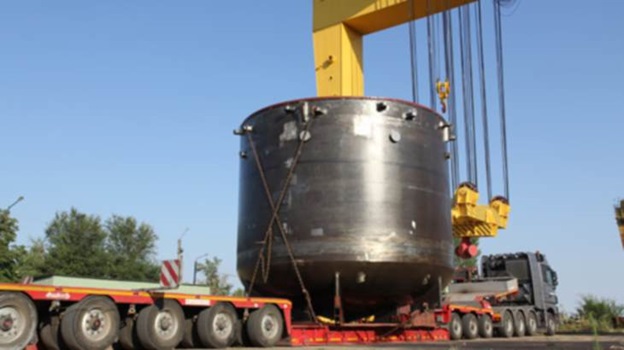Nuclear Reactors 745 - Russians Install Core Catcher For Corium Produced By Meltdown
Last week, the Russian Rosatom State Corporation Engineering Division announced that it had a core melt localization device (CMLD) or “core catcher” in Unit 3 of Tamil Nadu’s Kudankulam Nuclear Power Plant (KKNPP). A press release stated that the CMLD is designed to localize and cool any molten core materials that ate through the reactor core in a meltdown accident.
Unit 1 and Unit 2 at the KKNPP are functioning and were connected to the Indian national grid in 2013 and 2016. Civil work to construct Unit 3 and Unit 4 was started in June of 2017.
Molten core materials which are often collectively to referred to as “corium” is a semi-solid material similar to lava that is formed in the core of a nuclear reactor whenever there is a meltdown accident. A meltdown accident occurs when the nuclear fission reaction taking place in the reactor is not cooled sufficiently to maintain the control. The buildup of heat inside the reactor core as the fission process goes wild results in the melting of the fuel rods. Corium formed in a meltdown can remain radioactive for centuries. Reactor meltdowns occurred in Chernobyl in Russia in 1986 and Fukushima in Japan in 2011.
The Fukushima nuclear disaster resulted in the formation of corium under three Units of the Fukushima Daichi nuclear power plants. It has been almost nine years since the accident and the plant operators are still trying to find all the corium which melted through the reactor vessel and the ground underneath the reactor and spreading radioactive materials into the water table. If the Units at Fukushima had been equipped with CLMDs, the generation of radioactively contaminated ground water at Fukushima could have been prevented.
In a posting on the Rosatom website, it is explained that the latest CLMD is a metal structure with a cone shape. It weights about eight hundred tons. The cone is double-walled and the gap between the two walls is filled with a mixture of ferric and aluminum oxides known as FAOG. The cone itself is filled with a ceramic mixture that contains ferric oxide and aluminum oxide. This mixture is referred to as a “sacrificial material.” This sacrificial material prevents the corium from trickling through the bottom of the cone and also functions as a cooling mechanism.
The CLMD is installed at the bottom of the nuclear station’s protective shell. It is designed to save the protective shell as well as prevent radioactive emissions into the environment if there is a serious accident.
The first use of a CLMD was in the Chinese Tiawan nuclear power plant which was constructed according to a Russian design in 2011. In 2018, Rosatom installed a 200-ton CLMD was installed in the Rooppur 1 Nuclear Power Plant that the Russians built in Bangladesh.
At Kudankulam, the CLMD was installed under the reactor pit of Unit 3. Its design was modified for that particular site and Indian safety requirements. The CLMD has increased seismic resistance, hydro-dynamic and shock strength. It is equipped with flood protection and features simplified installation and assembly technology.
Rooppur1 core catcher:
